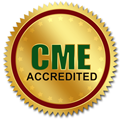
Jorge U Carmona
Universidad de Caldas, Colombia
Title: Platelet-rich gel supernatants are pro-inflammatory for normal equine cartilage explants
Biography
Biography: Jorge U Carmona
Abstract
Introduction: There are scarce data about the knowledge of differential effects of platelet rich (PRG) supernatants on normal equine cartilage explants. We believe that these substances should only be used in osteoarthritic cartilage, because they could induce inflammation in normal joint tissues.
Aims: The aims were: (1) to evaluate the effects at 48 and 96 h of two concentrations (25 and 50%) of leukocyte- and platelet-rich gel (L-PRG) and pure platelet rich gel (P-PRG) supernatants on the production/degradation in normal equine cartilage explants (CEs) of platelet-derived growth factor isoform BB, transforming growth factor beta-1, tumour necrosis factor alpha, interleukin (IL) 4 (IL-4), and IL-1 receptor antagonist (IL-1ra); and (2) to study possible correlations of these molecules with their respective PRG supernatant treatments.
Methods: CEs from six horses were cultured for 96 h with L-PRG and P-PRG supernatants at 25 and 50% concentrations, respectively. CE culture media were changed each 48 h and used for determination, by ELISA, of the molecules. L-PRG and P-PRG supernatants at 25 and 50%
Results: Concentrations influenced the molecular anti-inflammatory profile of CE groups cultured with these substances. 50% L-PRG supernatant produced the best regulatory effects when compared to the CE control group and the CE group treated with the other PRG supernatant concentrations.
Conclusions: PRG supernatants induced pro-inflammatory and possibly regulatory effects in normal CEs; situation that is different for the same tissues challenged with LPS, where these substances induce a more dramatic anti-inflammatory effect.

